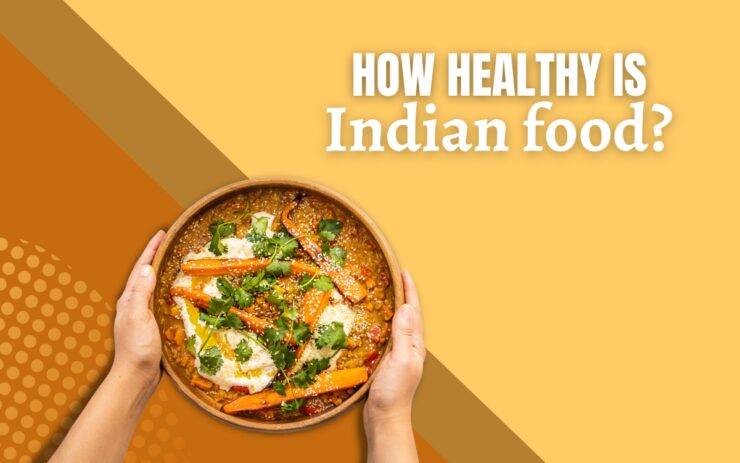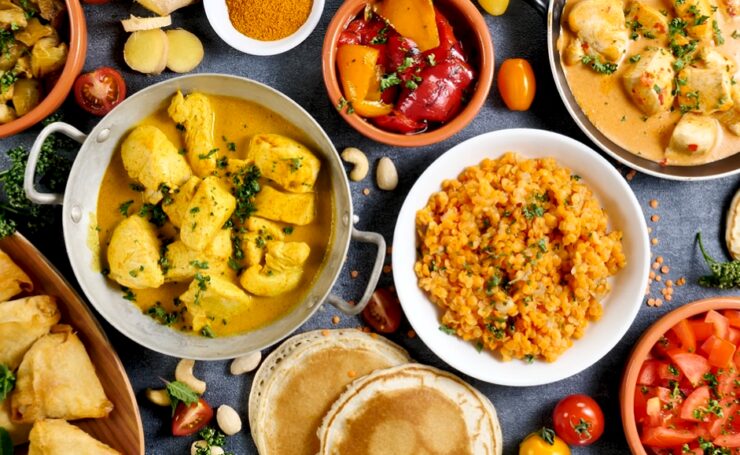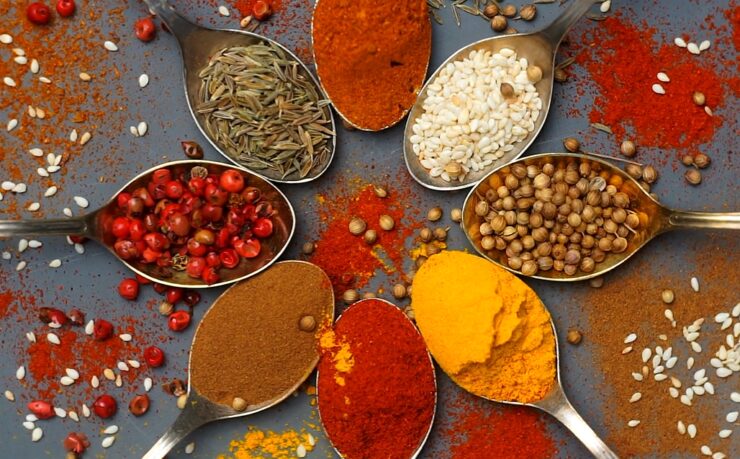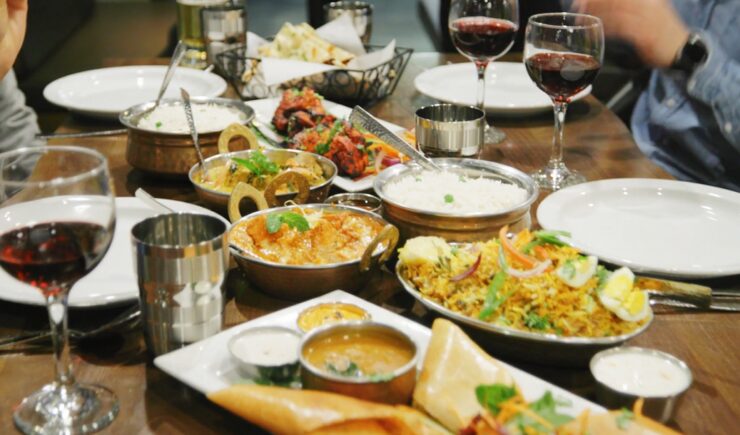With a wide variety of delicious flavors and fragrant spices, Indian food is certainly one of the most popular worldwide. It boasts numerous nutrients, and it is enriched with some exotic ingredients. But is Indian food healthy? We researched and found some interesting facts we would like to share with you.
“Healthy” is often a subjective term since what works for one individual may be bad for other. However, there are ways you can get a better understanding of this food if you break down all the ingredients in the dish and figure out their nutritional value. We are here to assist you in that endeavor and figure out whether or not this food is healthy. There is a lot to cover, so let us start without further delay.
Contents
What Are Common Ingredients in Indian Cuisine?
The general opinion around the globe is that Indian food is unhealthy, mainly due to plenty of rich, fatty, and spicy meals that are the reason for this cuisine’s popularity. However, you might be surprised to find out this actually is not true.
Indian food usually has a lot of well-balanced nutrients. This is especially the case when it comes to Indian cuisine from the past, which was mostly based on Ayurveda, which is an alternative medicine system with historical roots in India. Here are some ingredients that you can find in Indian dishes.
Indian Oils
There is a wide variety of cooking oils you can get in India. With that said, you can get some excellent and healthy variations from mustard and peanut oil to coconut and groundnut oil. However, the way these oils were processed earlier was much healthier than nowadays. Nevertheless, there are many healthy options you can go for.
Indian Salt
Black salt, rock salt, and pink salts have all originated in India. However, chefs had slowly moved to more refined versions of salt, which is probably one of the reasons why Indian food became unhealthier as well. So, it is likely that ingredients changed this cuisine in the first place, and if you want to make some Indian dish yourself, look for healthier variations of seasonings.
Indian Curry
The Indian curry, when mixed with the right set of ingredients and oils, can be a very good booster for your immunity. In addition, this spice can help in inflammation reduction, which is one of the biggest causes of diseases such as diabetes, hypertension, and heart disease.
When prepared with curry leaves, tomato, onion, black pepper, garlic, turmeric, and a wide variety of spices, Indian curry can be highly beneficial for your health and overall well-being.
Wheat
Wheat sometimes gets a bad rap for being labeled as an ingredient that can cause inflammation. However, this entirely depends on how the wheat is processed. Unprocessed, hand-ground wheat will not cause bloating and digestive problems. This type is often present in Indian food, so it is safe to say that it is yet another healthy ingredient.
Pickles and Chutneys
When you add pickles with quality rock salt and oil can be one of the best probiotic foods you can serve on your plate. On the other hand, traditional Indian chutney, when made with ground leafy greens and seeds, delivers high nutritive value to your meal.
When you want to make healthy Indian food that is highly nutritious, you should always opt for traditional and natural ingredients.
Indian Thalis
Each bowl in the traditional Indian thali has a small size. It includes three varieties of dal, sabzi, some rice or roti, or both. The thali also includes a small amount of a sweet dish. This thali is truly a complete meal, and it includes all essential nutrients in the right proportion.
On the other hand, thalis served in restaurants nowadays are much larger in terms of portion size. This is likely due to the fact that western culture supersizing the portions in almost all cuisines has increased.
Nutritional Value of Indian Food From Restaurants
Now that you know that homecooked Indian food can be very healthy, it is time to take a look at the type of Indian food that you can find at restaurants. In the section below, you will find some points that will show you how homemade and restaurant Indian food differ from each other.
- Indian food cooked in restaurants uses more oil for the base sauce or gravy to cook properly and quickly.
- Any type of fat, oil, or butter adds extra taste and flavor to the dish. You will notice that in restaurant dishes, entries like fries, butter sauce, and others taste amazing.
- Food cooked in too much oil or for longer periods loses its nutritional value.
- Some of the most popular side dishes for Indian foods are rice, naan, parantha, and/or roti. Although rice, oil, or butter-smeared naan are heavy in carbs, roti is a wholemeal bread, which is considerably lower in carbs.
- Restaurants use spices and chili excessively, and that makes their dishes rich, but this may lead to digestive problems.
- Chefs in restaurants use sugar, evaporated, or whole-fat dairy products like cream, which is indeed tasty but increases the calorie intake.
- Deep-fried snacks such as samosas, bhajias, poppadoms, and other popular entries on the menu are excellent for your appetite but less so for your waist.
As you can see, people do not accidentally wonder whether or not Indian food is healthy. It is mainly due to the fact that they had a chance to experience it in restaurants that usually use spices, oils, and other ingredients that can wreak havoc in your body if used excessively.
So, Is Indian Food Healthy?
If you cook Indian food at your home and use traditional spices, then yes, this food can be very healthy. Some of the advantages of this cuisine include immunity boosters, anti-inflammatory properties, and improved brain function.
When Indian food is prepared in restaurants, it is usually high in carbs and sugar, and calorie intake is much higher when compared to homecooked Indian dishes with traditional spices. In traditional cuisine, you will find foods that are high in fiber, lots of different fruits and vegetables, herbs, and spices, and all of these dishes are significantly lower in fat.
Potential Health Benefits of Indian Food
Traditional Indian cuisine uses less sugar, so it is an excellent food choice for people with diabetes. It also uses lots of different nuts, legumes, and low-fat dairy products. You will also notice that this food is rich in green vegetables and fresh fruits, which are all essential for keeping your heart, kidney, and body functions normal and healthy.
Spices and herbs deliver plenty of benefits and are not just seasonings. The ones that are used in Indian cuisine are known to have antioxidant and anti-microbial properties. Spices can also aid metabolism and assist in weight loss.
You can also opt for Indian foods spiced with ginger that are excellent for nausea prevention and digestion, and they make the food taste better, which is another bonus.
Final Words
Indian food is famous for its richness, variety, and taste. The common misconception is that this food is not healthy, and this is partially true, at least when you eat it in restaurants. However, homemade Indian food with the right set of spices can provide a wide variety of benefits and is very good for your body.
The bottom line is that if you want to indulge in some Indian food, it is perfectly fine to do it once in a while in restaurants, but if you are using traditional spices at home, you can actually make it a regular part of your diet.

Steve is a certified trainer with more than 10 years of training experience and he holds a Master’s in Sports Science. Prior to Boston Rock Gym, Steve worked for two years as a personal trainer.





